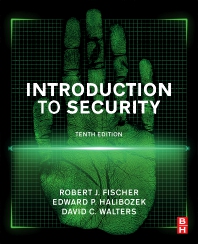DHS announces results of 2020 privacy technology demonstration

The Department of Homeland Security (DHS) Science and Technology Directorate (S&T) has published the results of the 2020 Privacy Technology Demonstration (2020 Demo). S&T hosted a first-of-its-kind event to understand the product landscape of technologies that can assist in protecting the privacy of individuals appearing in photos and videos. Five privacy systems participated in the event, demonstrating their ability to detect and blur faces in a challenge video created by S&T. These results are available through S&T’s Maryland Test Facility (MdTF) website, which supports DHS to test technologies and evaluate operational processes.
At large events or in an airport, video surveillance is a useful tool for public safety planning for crowd control or deploying the right number of responders. Recognizing the privacy concerns arising from use of video surveillance, S&T reached out to industry to understand how privacy enhancing technologies can be used to protect individual privacy in these circumstances. This was the first time DHS has partnered with industry to evaluate technologies intended to protect privacy by blurring or obfuscating faces.
“In recent years, we’ve observed tremendous improvement in face recognition technologies,” explained Arun Vemury, director of DHS S&T’s Biometric and Identity Technology Center. “The purpose of this research is to nurture the development of privacy enhancing technologies that can be used by organizations that have an interest in operating various types of camera systems, but recognize concerns related to face recognition surveillance.”
DHS tested the five privacy technologies to determine how well they could consistently detect and blur faces that appeared in a challenge video. The video presented common-use cases encountered during security operations: people interacting with a security officer one-on-one; people waiting in a crowded queue; people walking through an open space; and individuals wearing face masks that cover their nose and mouth. The 2020 Demo Results Summary depicts how each of the five technologies performed with respect to the following factors: barrel distortion, motion blur, pose variation, expression variation, occlusions, clipping, crowding, and masks.
The 2020 Demo effort was led by S&T’s Biometric and Identity Technology Center, which provides objective biometric and identity subject matter expertise to DHS to inform strategic planning and acquisitions of new capabilities.
To learn more about the 2020 Privacy Technology Demonstration, please see https://mdtf.org/Demo2020. To learn more about the work of the Biometric and Identity Technology Center, visit https://www.dhs.gov/science-and-technology/BI-TC or contact peoplescreening@hq.dhs.gov.
Looking for a reprint of this article?
From high-res PDFs to custom plaques, order your copy today!







